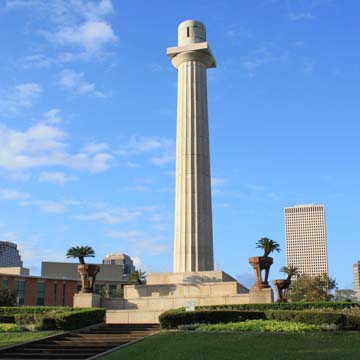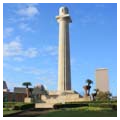In his urban plan for this area, Lafon envisioned a circular park, the Place du Tivoli, surrounded by a canal linked with the river and extending along what are now Howard and St. Charles avenues. Sadly, this imaginative scheme was never realized, and the planned park became a landscaped traffic circle. It was renamed for General Robert E. Lee in 1884, upon the dedication of New York sculptor Alexander Doyle’s bronze statue of Lee atop a sixty-foot-high Doric column of white Tennessee marble. John Roy designed the monument’s Georgia granite base, which has four sets of stairs aligned with compass points. The four bronze urns were added in 1930. The statue of General Lee was taken down in May 2017, one of four monuments commemorating people or events associated with the Confederate cause or white supremacy removed from public sites.
You are here
Lee Circle
If SAH Archipedia has been useful to you, please consider supporting it.
SAH Archipedia tells the story of the United States through its buildings, landscapes, and cities. This freely available resource empowers the public with authoritative knowledge that deepens their understanding and appreciation of the built environment. But the Society of Architectural Historians, which created SAH Archipedia with University of Virginia Press, needs your support to maintain the high-caliber research, writing, photography, cartography, editing, design, and programming that make SAH Archipedia a trusted online resource available to all who value the history of place, heritage tourism, and learning.


















